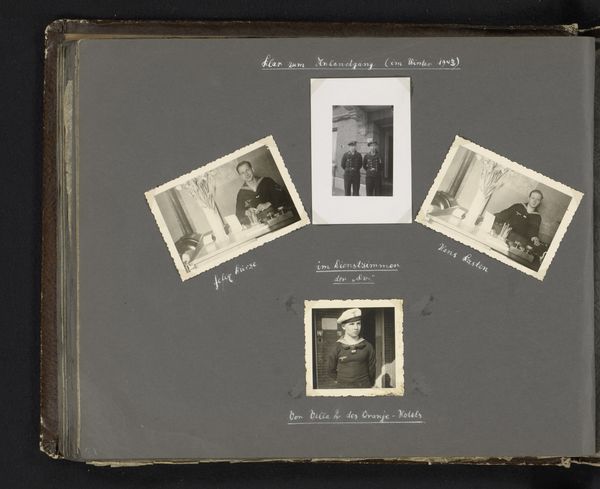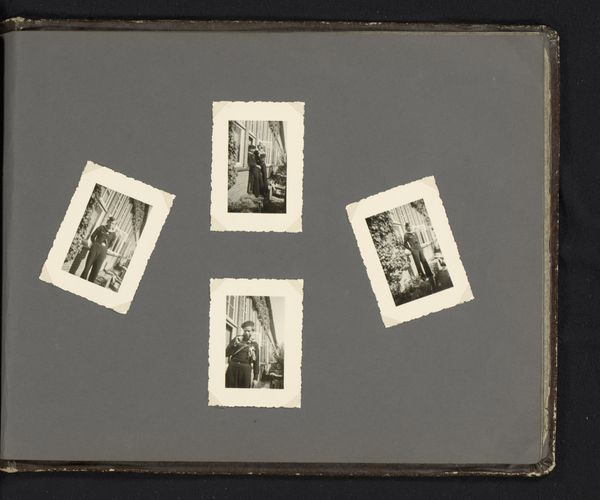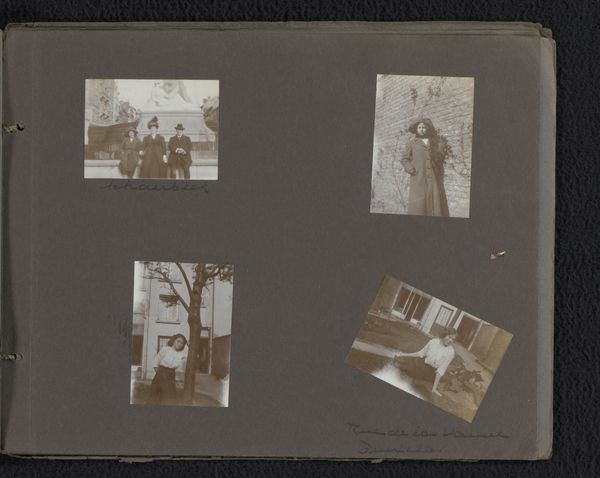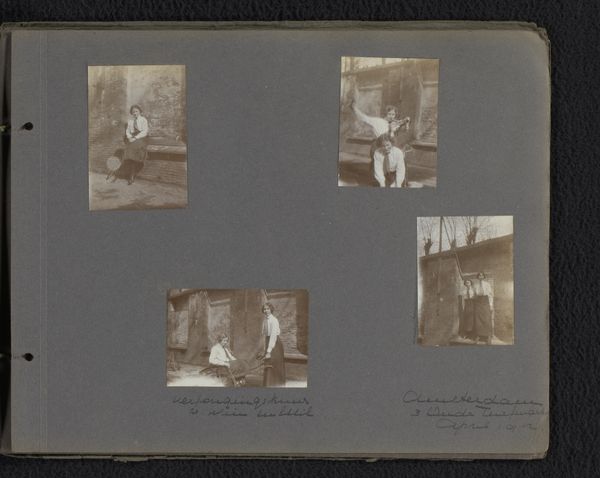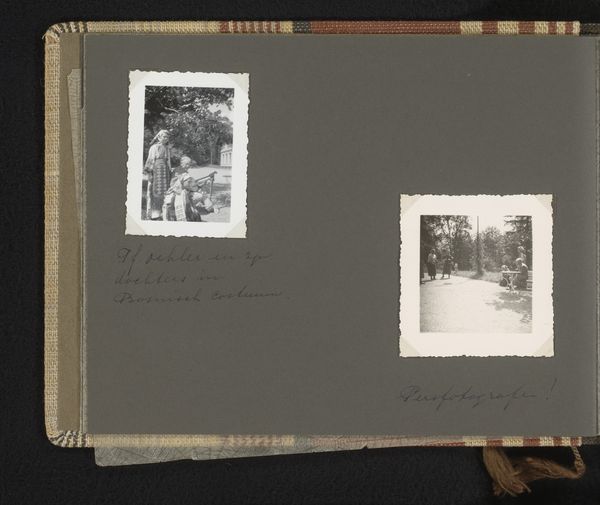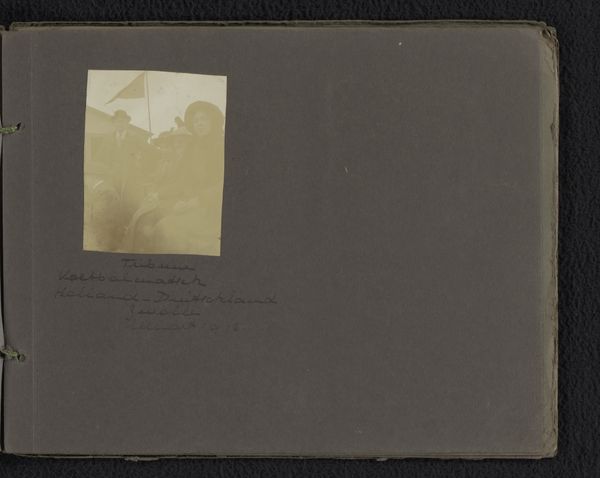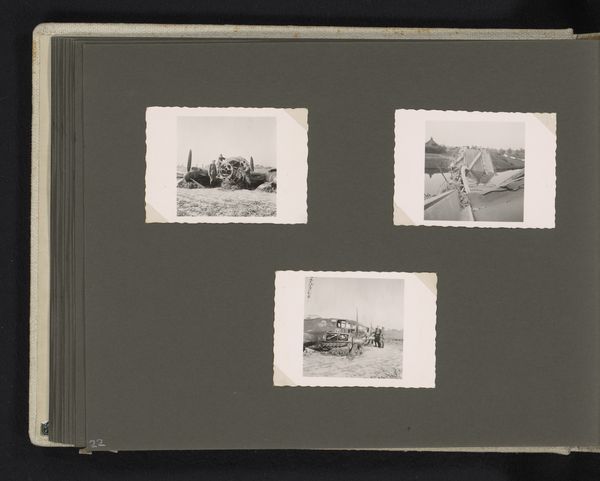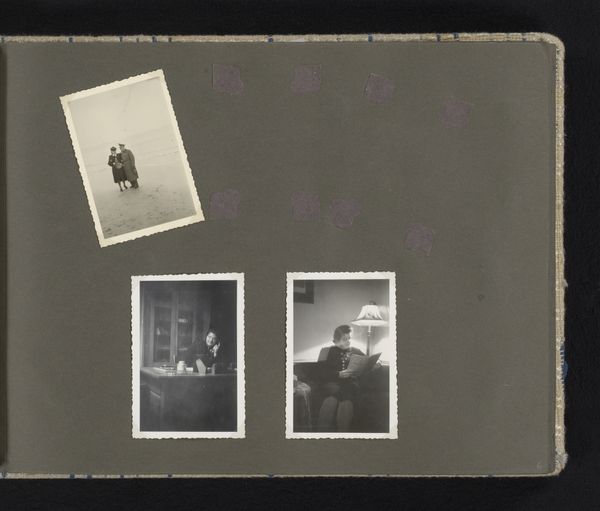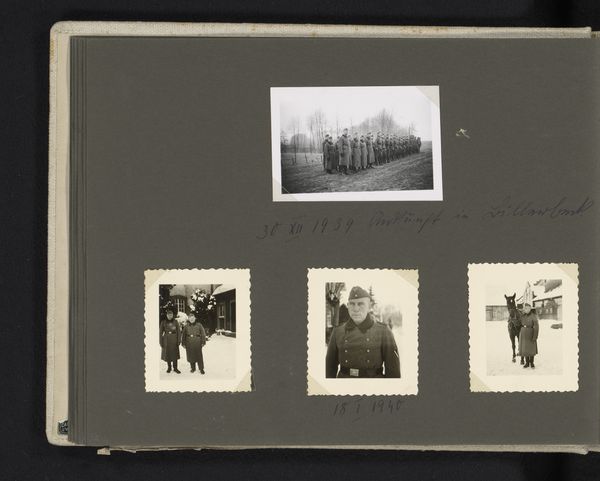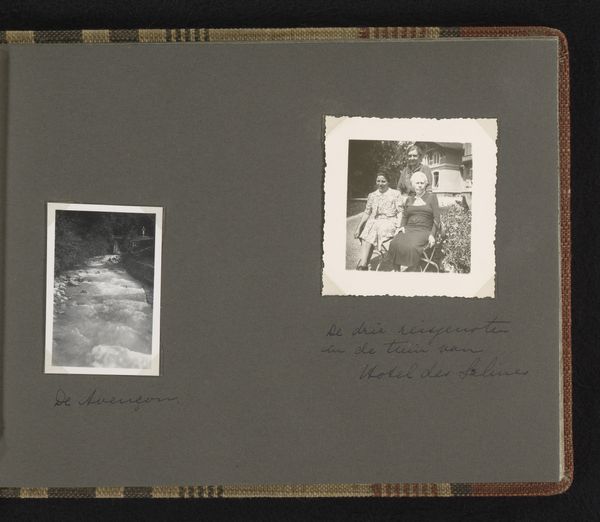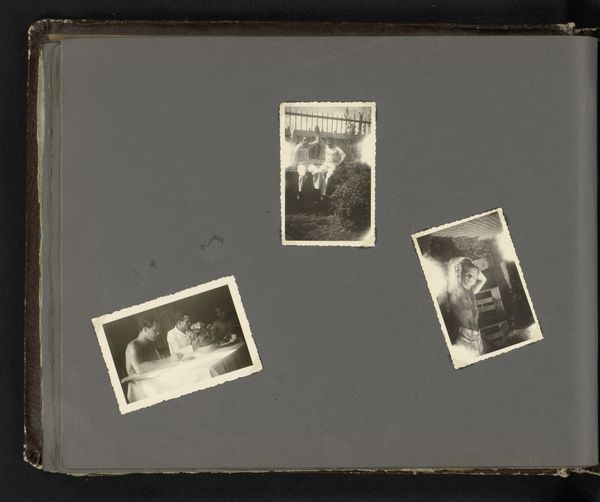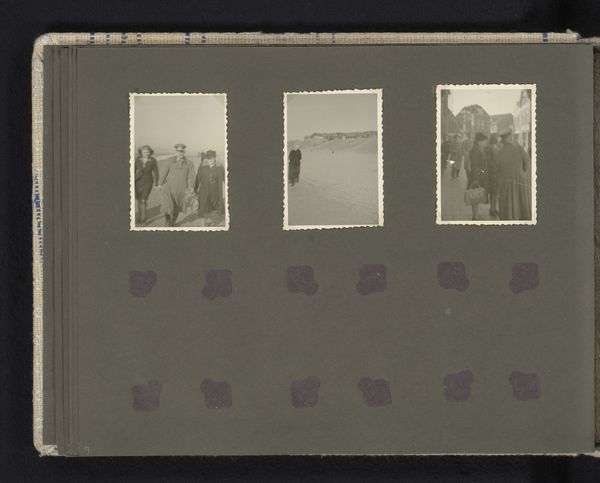
print, photography
#
portrait
#
garden
#
still-life-photography
# print
#
photography
#
group-portraits
#
genre-painting
Dimensions: height 306 mm, width 211 mm
Copyright: Rijks Museum: Open Domain
Editor: Here we have a printed photograph titled "Drie portretten van de familie ten Boom in een tuin", created in 1932. It’s striking how the individual photos are presented within an album. What’s your take on this, looking at it now? Curator: Let’s consider the photograph not just as a representation, but as an object, a product. These gelatin silver prints, mounted within the family album, point to the material conditions of bourgeois life in 1932. What was the availability of photography? What role did it play in constructing and preserving family identity? Editor: So, you’re saying it’s less about who they are, and more about the cultural context of image-making itself? Curator: Exactly! The photograph’s value as a memento intertwines with its role as a manufactured item, reflecting the leisure and disposable income necessary to engage in photographic portraiture. Think about the labor involved, from the photographer to the album's binder. What statement do you think the materiality of the family album makes in relation to wealth or status? Editor: Hmm, the album itself does suggest preservation and care, implying a certain social standing. And photography back then wasn't as ubiquitous as today, so possessing these images does speak to something about their status. How do these small portraits shape how we see their access to such an act and artifact? Curator: Precisely. By understanding photography and albums as commodities, we gain insight into the social dynamics of the period and how families like the ten Booms situated themselves within those dynamics. Editor: That's a compelling viewpoint. I hadn't considered the economics and labor woven into what appears to be a simple family memento. Curator: Analyzing it from a materialist perspective opens up layers of meaning beyond mere representation. Editor: I'll definitely look at historical photographs differently now, thinking about the production and consumption surrounding them! Thanks!
Comments
No comments
Be the first to comment and join the conversation on the ultimate creative platform.
